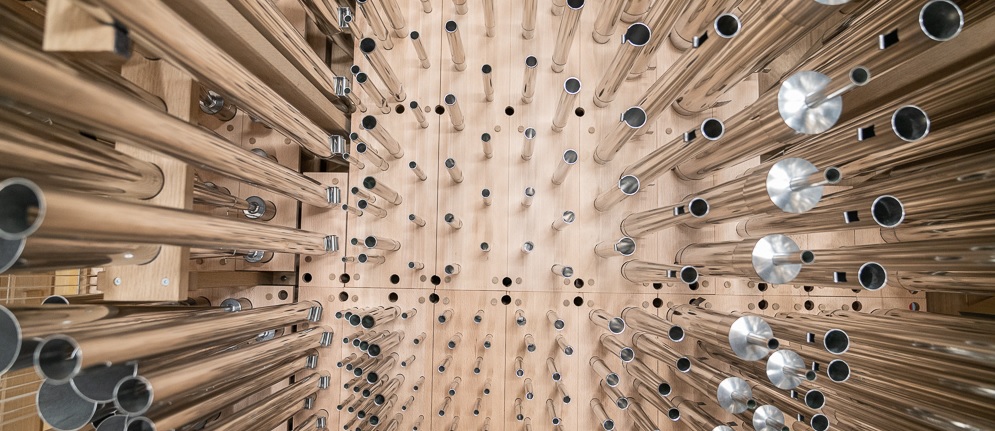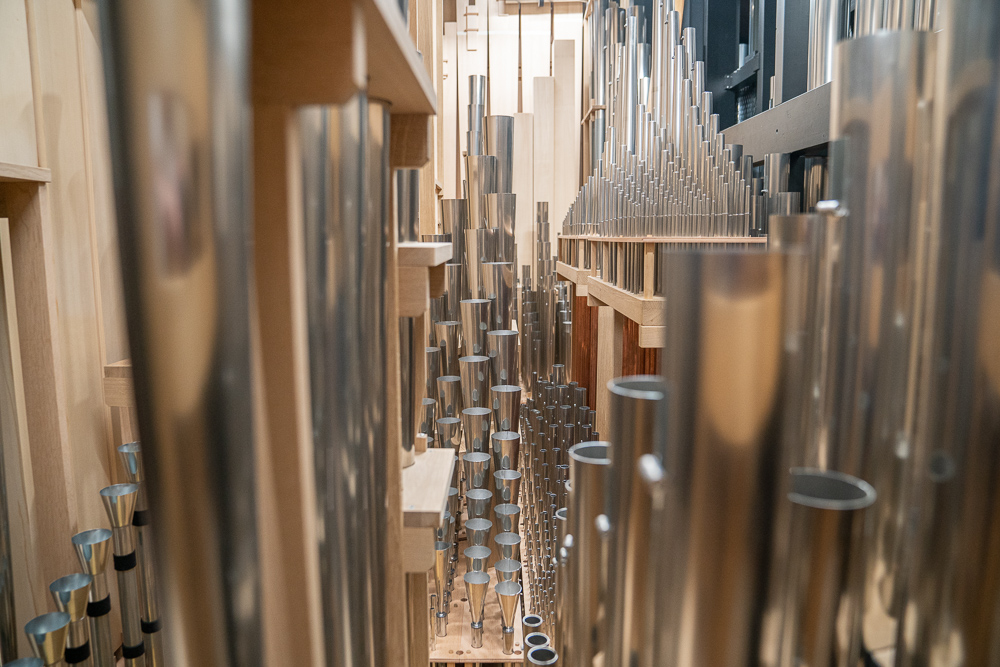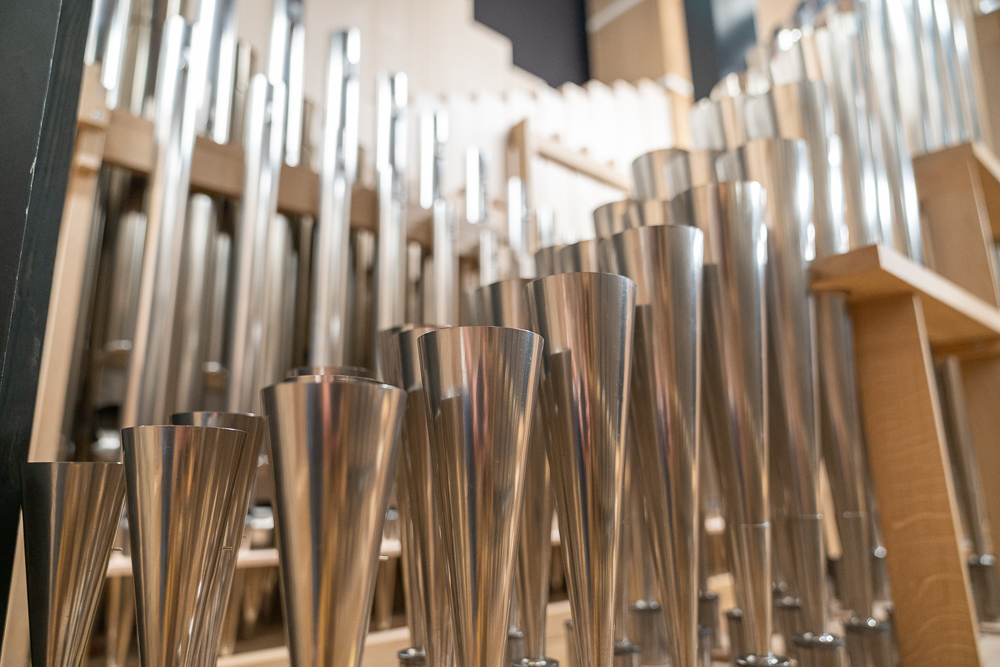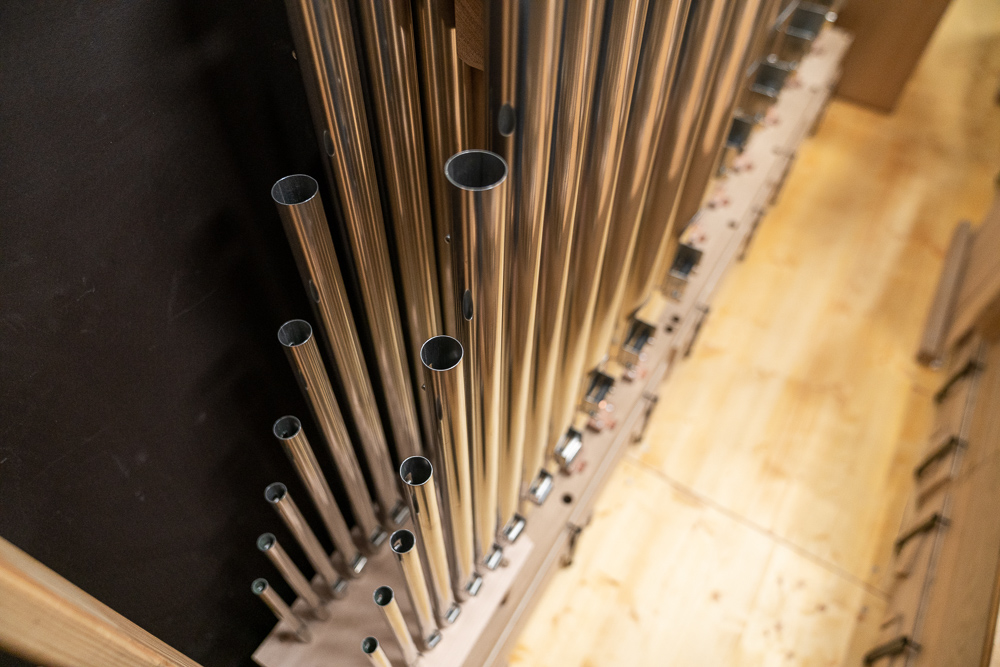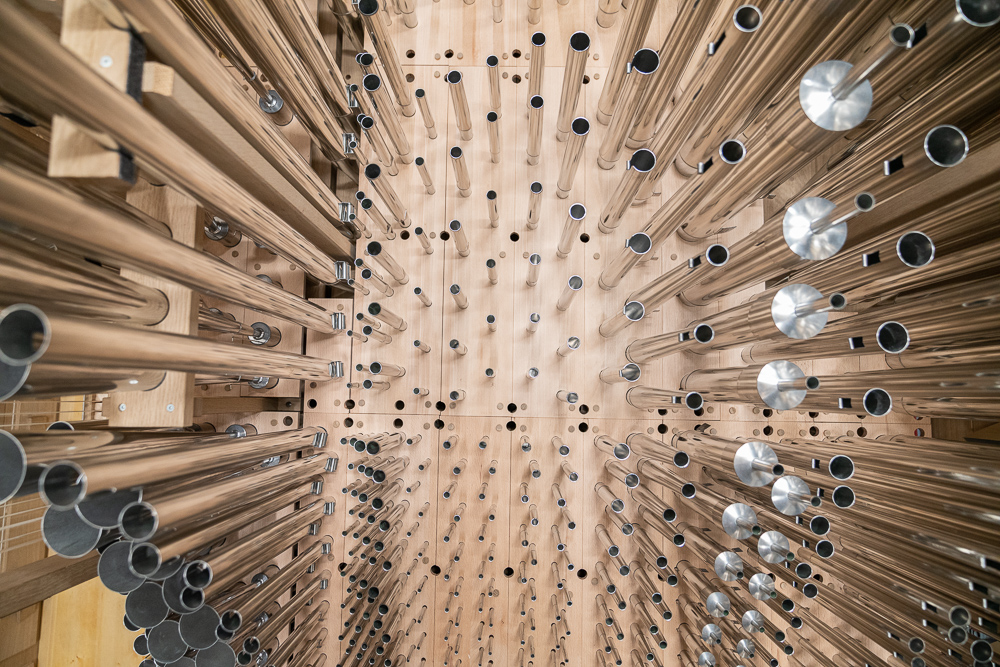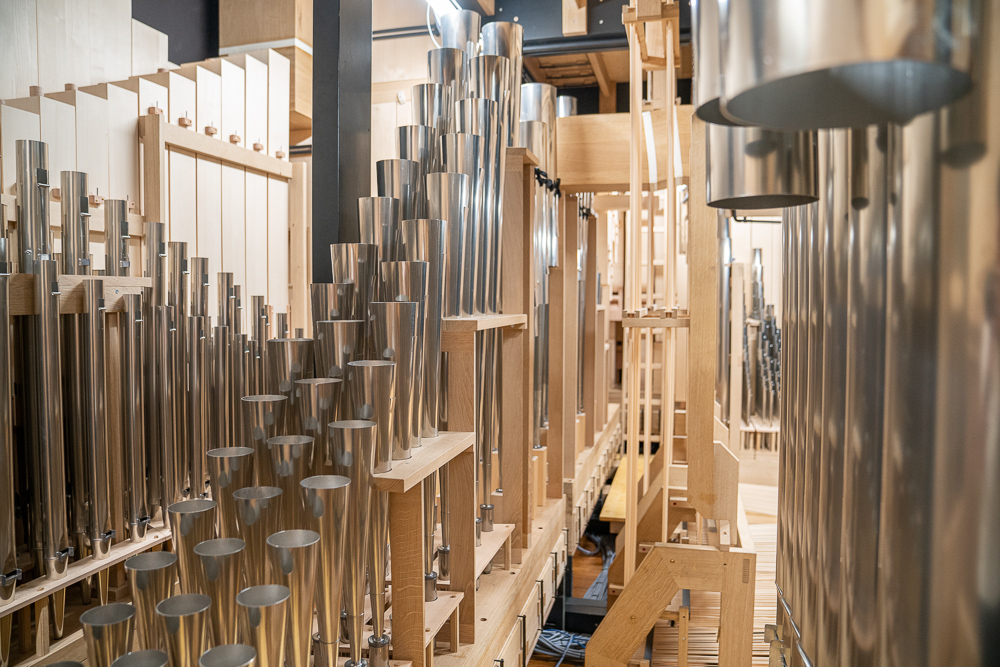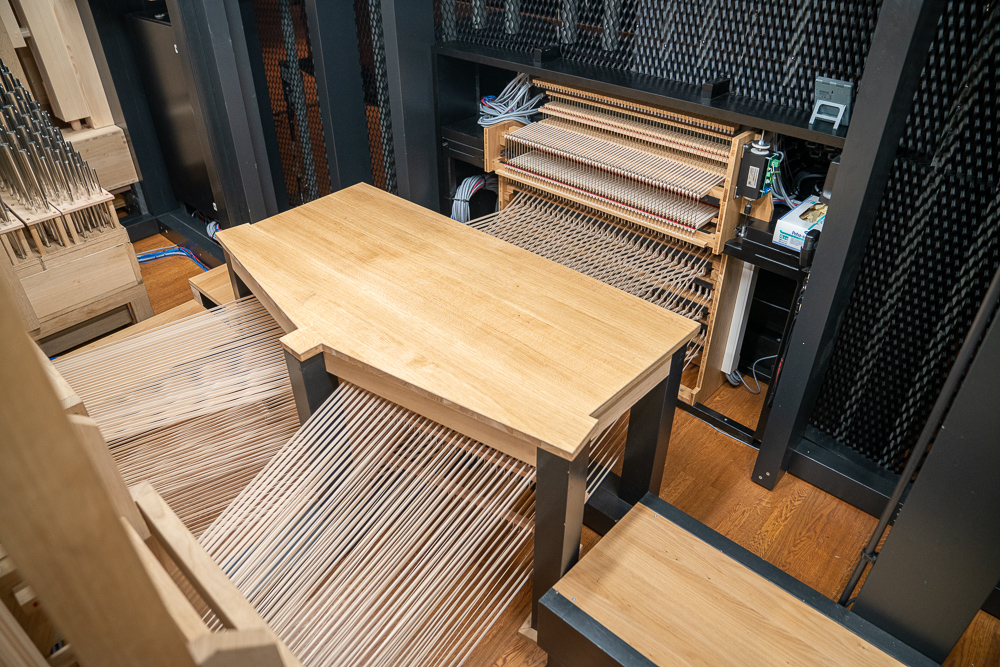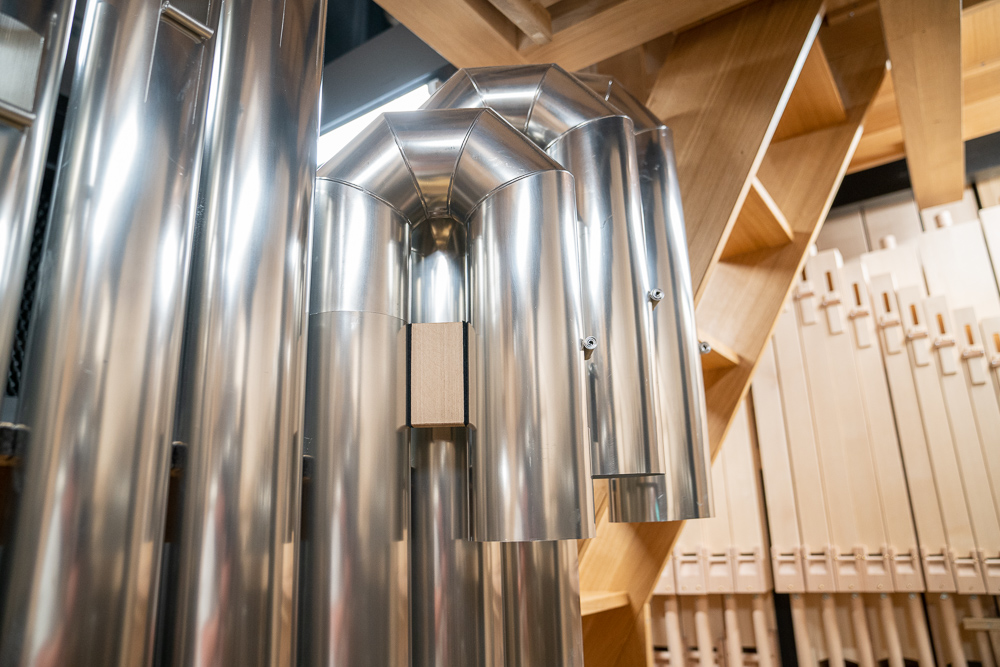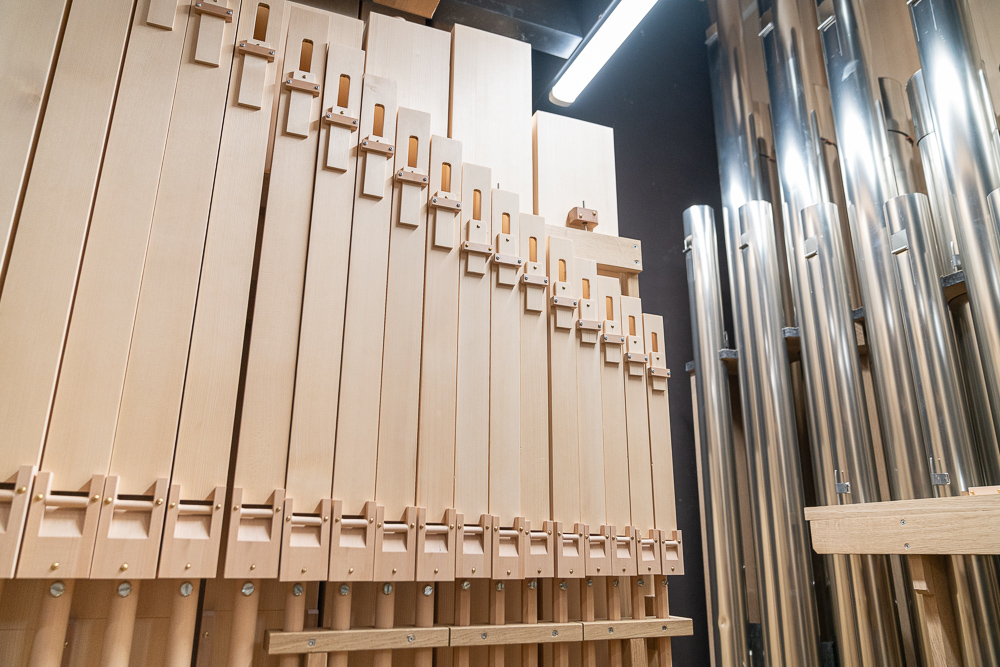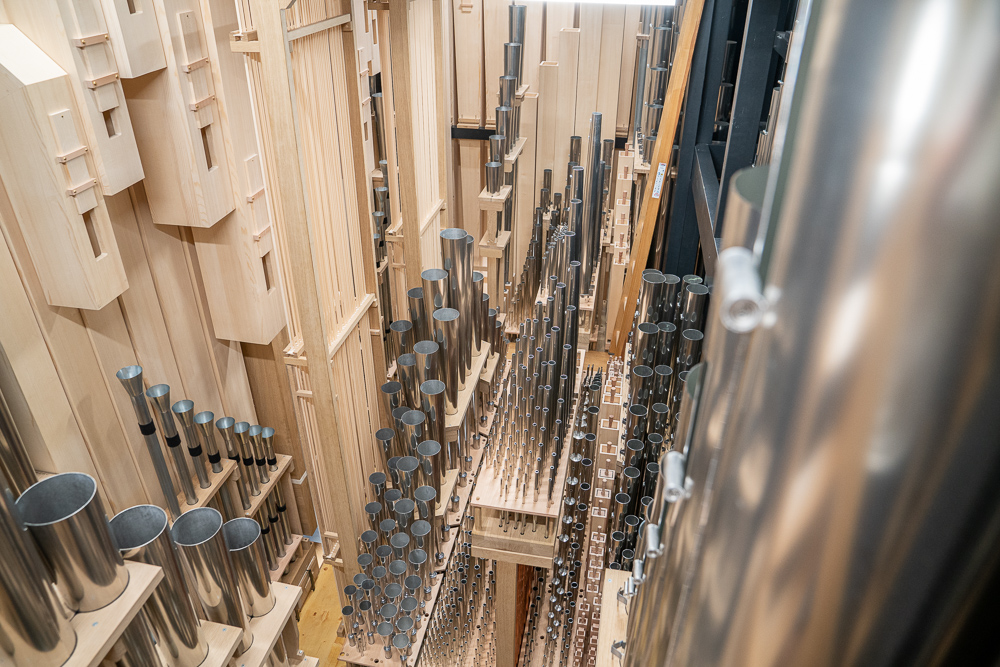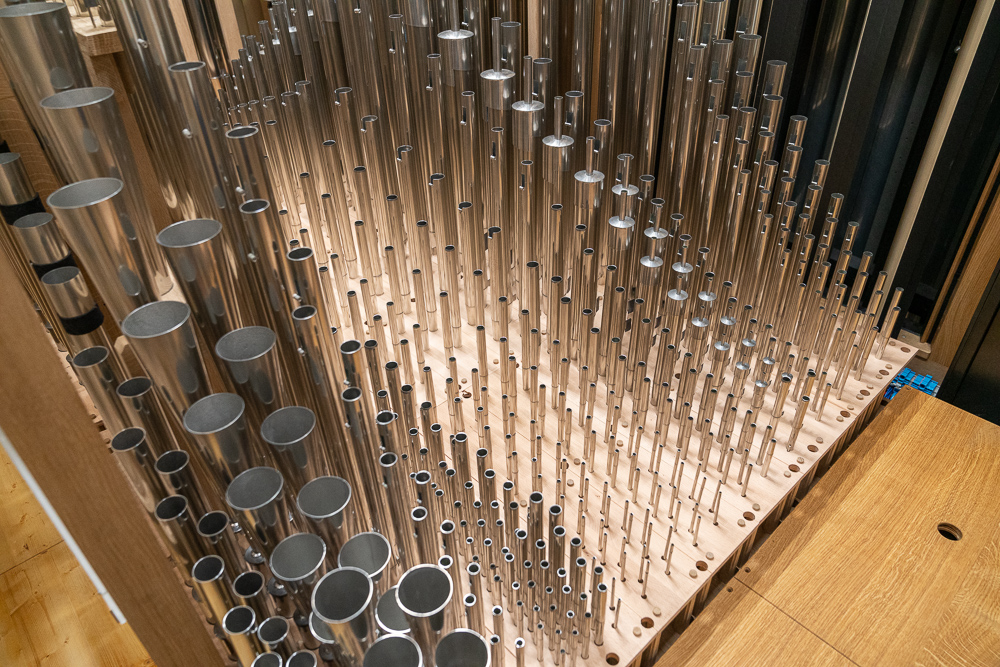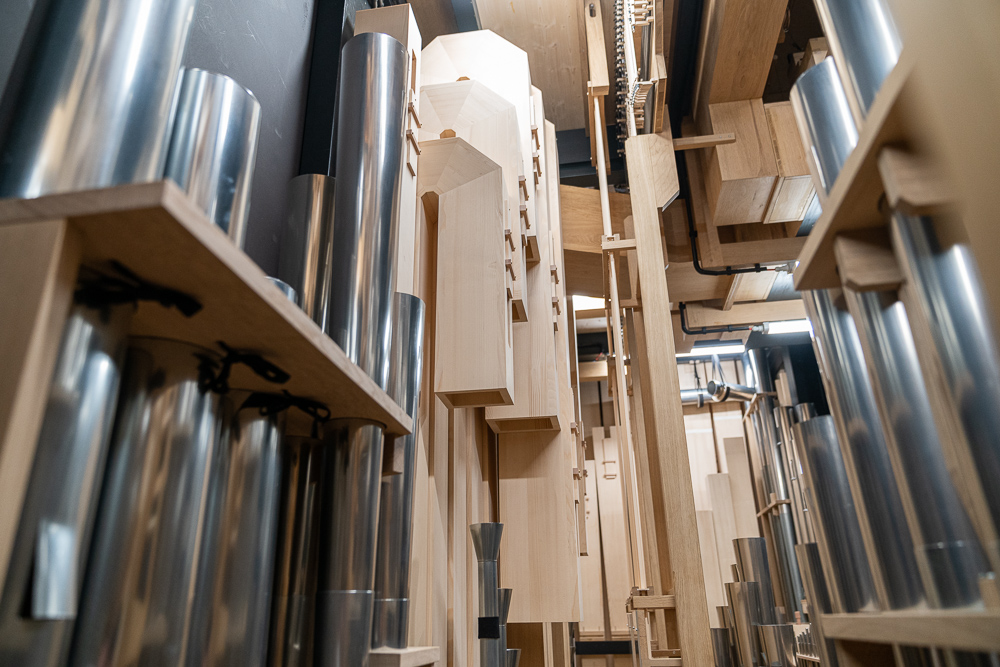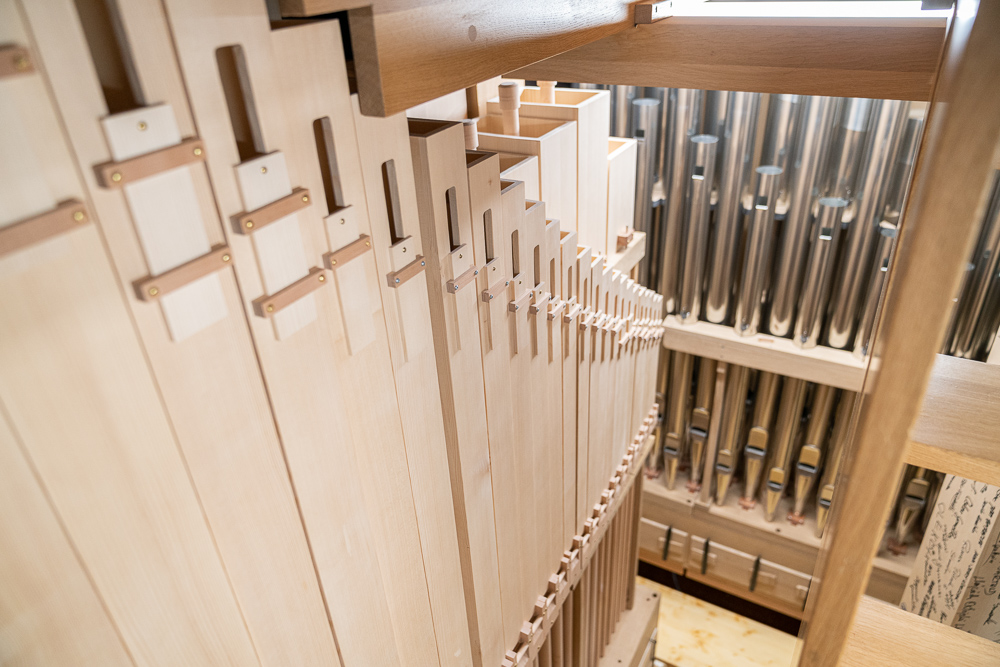With its size, tonal power, wide palette of sound colours and frequency range, the organ surpasses a symphony orchestra! The pipe organ at the NFM will make the music of the past centuries sound in its full splendour, and many fascinating contemporary works for organ will be introduced to our audiences for the first time.
The Pipe organ
To są wspaniałe organy. Akustyka Sali Głównej jest ciepła, dopełnia piękne brzmienie tego instrumentu. Żałuję, że nie mogę zabrać ich ze sobą do Nowego Jorku.
Paul Jacobs, organista
The Pipe Organ at the NFM
Jak powstają organy NFM
Klais Orgelbau
An interview with Philipp Klais
Przyjazd piszczałek organowych
Prace w Sali Głównej NFM
Jak działają organy?

